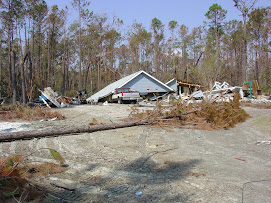At the Mississippi Insurance Forum we have identified two main problems with Property and Casualty insurance in the aftermath of Hurricane Katrina:
1. Unfair and predatory claims handling as demonstrated by the unrefuted fact patterns in cases like McIntosh v. State Farm where State Farm threatened to fire their own engineers who found wind damage as the primary cause of the loss rather than flooding. State Farm actually ordered additional engineering reports until they received the "answer" they requested in such cases.
2. A lack of transparency in insurance product pricing, especially in the area of reinsurance.
While we will tackle both issues its worth noting the first has already received a fair amount of press attention while the second has not been addressed in detail except at a few web sites like this one. I suspect the reason the economic concept of market transparency has received such little attention is because it is complicated to explain and understand. I endeavor with this entry to start our readership along the path to understanding these important yet basic economic principles.
First we need to start with the decision to purchase a multi-peril homeowner's policy and examine the criteria consumers use when selecting an insurer. Think about it, how did you choose your insurance agent and insurer? Did you let your fingers do the walking or perhaps you received a referral from a friend of the agent? Or maybe we thought the ad we saw during the football game was good and we feel safe knowing the local agent in the spot showed up when the house burned down. Maybe as a first time homebuyer you got a good tip from your mortgage broker on who to use. Another good question is why did you buy the policy? Because it was it required by the bank or mortgage company? What about the policy limits, were they set to only cover paying off the mortgage because it was cheaper than insuring the total value? How many times since you first purchased the policy have you evaluated the risks you are paying to insure?
These are all very important questions. My professional experience preparing post Katrina income tax returns with casualty loss is that most people literally are asleep at the wheel when it comes to assessing the risks that may impact them in the future. In fact I submit it is basic human nature to avoid thinking about such unpleasant possible future events. The end result of burying ones head in the sand is invariably bad for the consumer once disaster strikes.
Post disaster hindsight reveals the complete inadequacy of the original criteria we used to select an insurer. For instance, the fact your local State Farm agent is a good guy (mine is for certain) is meaningless when the "good neighbor" refuses to pay for an insured risk. And all the accumulated advertising we've seen never prepared us for the very real possibility the good neighbor will force many of it's customers to use the court system to collect on the policy as a matter of internal claims handling policy.
Had we used good criteria originally to purchase insurance, we would have considered variables such as recent claims handing histories of these companies in our purchase decision. I've had people I know off the coast tell me they are not worried about State Farm covering windstorm risks because they are "too high to flood". Human nature then takes over for a time, refusing to believe that State Farm refused to cover obvious wind damage in Oklahoma City after an F5 tornado struck there in May 1999 or that a jury there found, "that State Farm "recklessly disregarded" its duty to deal fairly with policyholders, doing so "intentionally and with malice" through the use of biased expert opinions after the 1999 tornado." Perhaps we decide to switch to another insurer such as Allstate only to find out their internal documents describe treating a claimant/customer with "Boxing Gloves" instead of "good hands" and their record in customer treatment in automobile insurance claims appears abysmal. In fact we find out that according to the AM Best, "In the decade after Allstate instituted the McKinsey program in 1995, the amount of money it paid out per premium dollar in car accident cases declined from about 63 cents to 47 cents". Most importantly we find out the lack of good information the consumer has to evaluate insurers is stunning.
Insurers on the other hand know a good bit about their customers. They know your credit score for instance and will rely on a computer model to determine how your claim is handled. In a previous post on this forum I detailed how insurers spend big money on weather modeling to assess the risk they face. In short most consumers use subjective, sometimes emotional criteria to purchase insurance while insurance companies use objective criteria in how they conduct business. The gap in market knowledge between insurers and consumers is referred to in economics as Information Asymmetry, and is defined as "A situation in which one party in a transaction has more or superior information compared to another. This often happens in transactions where the seller knows more than the buyer, although the reverse can happen as well. Potentially, this could be a harmful situation because one party can take advantage of the other party’s lack of knowledge."
In future posts we will further examine the concepts of Asymmetric information and how it translates into premium pricing, especially in reinsurance.
sop
Wednesday, December 26, 2007
Purchasing Insurance: Market Transparency and Other Important Concepts Part 1
Posted by
Sop811
at
11:09 AM
![]()
![]()
Labels: Claims Handling, Sop, Transparency
Subscribe to:
Post Comments (Atom)

No comments:
Post a Comment